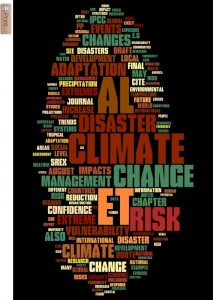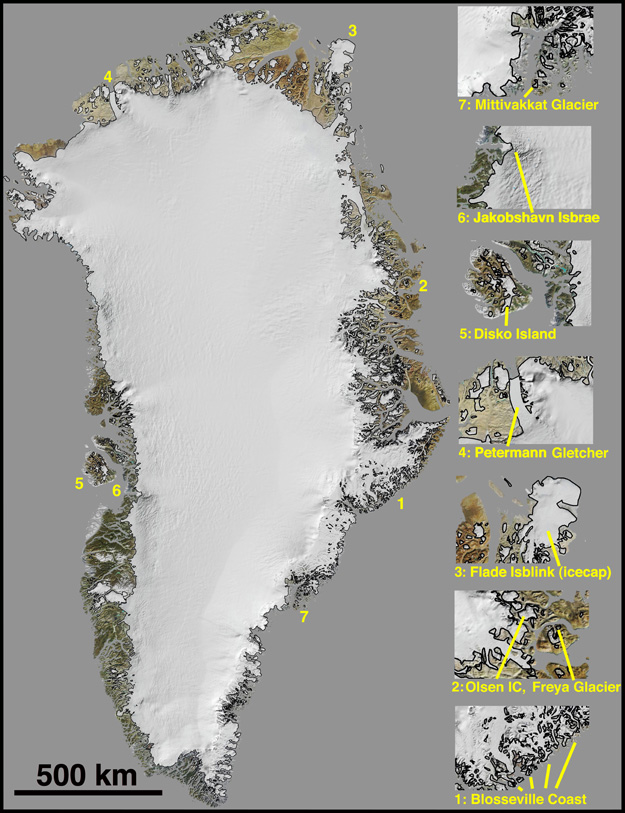Tuesday
There were two interesting themes in the solar sessions this morning. The first was a really positive story about how instrumental differences between rival (and highly competitive) teams can get resolved. This refers to the calibration of measurements of the Total Solar Irradiance (TSI). As is relatively well known, the different satellite instruments over the last 30 or so years have shown a good coherence of variability – especially the solar cycle, but have differed markedly on the absolute value of the TSI (see the figure). In particular, four currently flying instruments (SORCE, ACRIM3, VIRGO and PREMOS) had offsets as large as 5W/m2. However, the development of a test-facility at NASA Langley the
University of Colorado, Laboratory for Atmospheric and Space Physics in Boulder
Colorado – an effort led by Greg Kopp’s group – has allowed people to test their instruments in a vacuum, with light levels comparable to the solar irradiance, and have the results compared to really high precision measurements. This was a tremendous technical challenge, but as Kopp stated, getting everyone on board was perhaps a larger social challenge.
The facility has enabled the different instrument teams to calibrate their instruments, and check for uncorrected errors, like excessive scattering and diffusive light contamination in the measurement chambers. In doing so, Richard Wilson of the ACRIM group reported that they found higher levels of scattering than they had anticipated, which was leading to slightly excessive readings. Combined with a full implementation of an annually varying temperature correction, their latest processed data product has reduced the discrepancy with the TIM instrument from over 5 W/m2 to less than 0.5 W/m2 – a huge improvement. The new PREMOS instrument onboard Picard, a french satellite, was also tested before launch last year, and they improved their calibration as well – and the data that they reported was also very close to the SORCE/TIM data: around 1361 W/m2 at solar minimum.
The errors uncovered and the uncertainties reduced as a function of this process was a great testament to the desire of everyone concerned to work towards finding the right answer – despite initial assumptions about who may have had the best design. The answer is that space borne instrumentation is hard to do, and thinking of everything that might go wrong is a real challenge.
The other theme was the discussion of the spectral irradiance changes – specifically by how much the UV changes over a solar cycle are larger in magnitude than the changes in the total irradiance. The SIM/SOLSTICE instruments on SORCE have reported much larger UV changes than previous estimates, and this has been widely questioned (see here for a previous discussion). The reason for the unease is that the UV instruments have a very large degradation of their signal over time, and the residual trends are quite sensitive to the large corrections that need to be made. Jerry Harder discussed those corrections and defended the SIM published data, while another speaker made clear how anomalous that data was. Meanwhile, some climate modellers are already using the SIM data to see whether that improves the model simulations of ozone and temperature responses in the stratosphere. However, the ‘observed’ data on this is itself somewhat uncertain – for instance, comparing the SAGE results (reported in Gray et al, 2011) with the SABER results (Merkel et al, 2011), shows a big difference in how large the ozone response is. So this remains a bit of a stumper.
The afternoon sessions on water isotopes in precipitation was quite exciting because of the number of people looking at innovative proxy archives, including cave records of 18O in calcite, or deuterium in leaf waxes, which are extending the coverage (in time and space) of this variable. Even more notable, was the number of these presentations that combined their data work with interpretations driven by GCM models that include isotope tracers that allow for more nuanced conclusions. This is an approach that was pioneered decades ago, but has taken a while to really get used routinely.
References
- L.J. Gray, J. Beer, M. Geller, J.D. Haigh, M. Lockwood, K. Matthes, U. Cubasch, D. Fleitmann, G. Harrison, L. Hood, J. Luterbacher, G.A. Meehl, D. Shindell, B. van Geel, and W. White, "SOLAR INFLUENCES ON CLIMATE", Reviews of Geophysics, vol. 48, 2010. http://dx.doi.org/10.1029/2009RG000282
- A.W. Merkel, J.W. Harder, D.R. Marsh, A.K. Smith, J.M. Fontenla, and T.N. Woods, "The impact of solar spectral irradiance variability on middle atmospheric ozone", Geophysical Research Letters, vol. 38, pp. n/a-n/a, 2011. http://dx.doi.org/10.1029/2011GL047561


